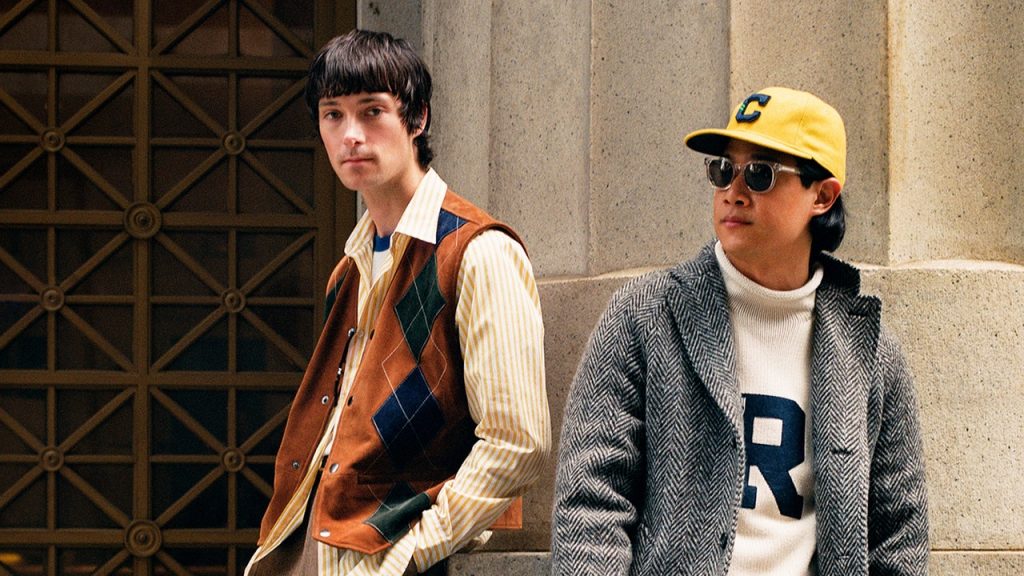
The New J.Crew
So Babenzien has designed his J.Crew to do something else. His philosophy is so direct, and his ambitions so seemingly modest, that you’d be forgiven for thinking that his vision for the brand is simple. Because, when you hear it, his plan—making affordable, accessible, and high-quality clothing available to the largest possible audience—can sound facile. Not up to the monumental scale of J.Crew’s issues. Disruptive only on the margins.
But then you look around and realize that nobody else is doing it.
You’d think it would have taken me longer, figuring out what to wear to interview for a job at GQ. But at the time, nearly a decade ago, there was really only one answer to the question: I wore J.Crew (white oxford shirt, black knit tie, light-wash jeans). It was what I could afford, but it was also, in some sense, what I knew I was supposed to wear. In cities all across the country, folks in jobs without a formal dress code—marketers and architects, chefs and low-key lawyers—had, seemingly overnight, adopted the J.Crew uniform. My new colleagues were in part responsible for this shift, having endorsed the brand’s casual-but-easily-dressed-up look in the pages of this magazine. But they seemed to walk the walk too: After I got the job I saw that many of my twenty-something coworkers wore J.Crew, as did our forty-something supervisors. Occasionally, it was whispered, the editor in chief did too.
J.Crew began as a catalog business in 1983, and quickly became a rival to heritage brands like L.L. Bean and Lands’ End. But even by the early 2000s, when Todd Snyder started as the men’s designer, “men’s was always an afterthought,” Snyder told me. “The business wasn’t very big, and it was always in the basement.” That changed under CEO Mickey Drexler, who joined from Gap in 2003—and, Snyder recalled, encouraged experimentation. Along with the marketing whiz Andy Spade, they converted a Tribeca liquor store into an advanced-for-J.Crew shop, surrounding the brand’s new designs for men with high-end third-party goods, like Red Wing boots. The most successful of those designs—like the instantly omnipresent Ludlow suit, a slim-cut silhouette suitable for weddings, board meetings, and first dates—went on sale less than a mile away, at the company’s first men’s-only shop (after the Liquor Store) in SoHo. “It took off, and then it kept going and kept going,” Snyder said. (Drexler declined to speak on the record.)
But the trick about aligning your brand with fashion is that the fashion world’s attention is fleeting. And less than a decade after the introduction of the Ludlow, signs of change were everywhere. The office dress code was beginning to slacken. Sneaker culture was ascendant. Fast fashion began copying trends from the European runways at a quicker rate, and Kanye West traded in his tweed blazer for a $265 Rottweiler T-shirt from Givenchy. The casual polish of J.Crew—the just-so cuffed jeans tapering to bare ankles and beat-up dress shoes—felt almost instantly dated.
It wasn’t just that Americana was losing steam, though. The retail model that J.Crew had ridden to prominence began to look outmoded, and the company was slow to develop an e-commerce strategy. This state of affairs was magnified by the fact that, in 2011, Drexler arranged a leveraged buyout that made J.Crew a private company and saddled it with an enormous debt load. “The company put itself in a position where it could not afford to take a hit,” Maggie Bullock said. In 2014, the company reported a loss of more than half a billion dollars. Drexler left in 2019. The next year the company filed for bankruptcy.